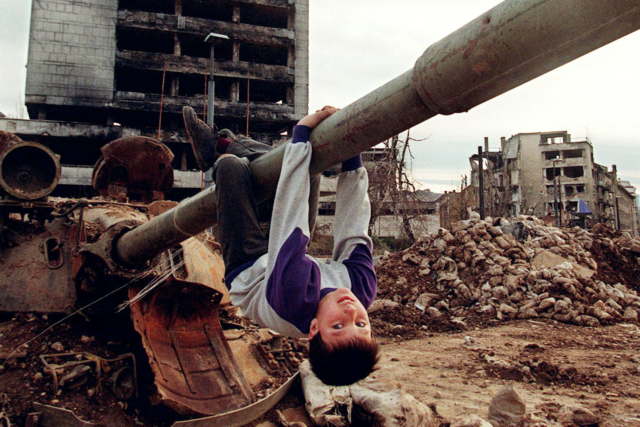Homelessness in Bosnia and Herzegovina

The Bosnian War ended in 1995 with the signing of the Dayton Peace Accords, yet its impact reverberates throughout the country today. The Bosnian War was a three-year conflict between ethnic groups comprising of the former Republic of Yugoslavia, Bosnian Muslims (Bosniaks), Serbs and Croats. According to the United Nations High Commissioner for Refugees (UNHCR), roughly 80% of Bosniaks died during the war. As a result of the war, homelessness in Bosnia and Herzegovina became rampant, leaving thousands without shelter. As of 2018, more than 90,000 refugees of the Bosnian War remain internally displaced, many of whom currently live in collective centers across the country. Homelessness in Bosnia and Herzegovina became a harsh reminder of the trauma endured more than two decades ago. It also serves as a reminder of the enduring challenges of post-war reconstruction.
Homelessness Statistics in Bosnia-Herzegovina
Data regarding the extent of homelessness in Bosnia and Herzegovina is elusive. There has only been one census completed since the conclusion of the war, limiting the government’s ability to support the homeless. Refugees and internally displaced persons are eligible for housing assistance under the Dayton Peace Accords. However, government monitoring makes the accessibility of these resources difficult.
A study by Hilfswerk Austria International, one of the few studies about the need for social housing in Bosnia, revealed data about the thousands of families who are not eligible for aid under the Dayton Accords. As of 2010, 395 families were living in collective centers. Meanwhile, another 553 families were living in temporary housing such as barracks. Roughly 359 families lived in improvised shelters and 219 families lived on the street without shelter. Since 2010, social programs have emerged to support the homeless in Bosnia and Herzegovina.
The Regional Housing Programme
Under the Dayton Accords, the government pledged to close down collective centers by 2020 to find more permanent housing solutions for refugees and internally displaced persons. In the last decade, the Regional Housing Programme has worked to do just that. By 2018, the program had already changed the lives of about 14,000 people. The program has six specific sub-projects with particular goals.
- BiH1: Securing more than €2 million worth of grant funding, this project provided building materials to 20 families and “reconstruction assistance to 150 families.” The project reached completion in 2018.
- BiH2: Securing more than €10 million worth of grant funding, this project reconstructed 30 family houses for Croatian refugees with an additional 750 family houses for others. The initiative finished in 2019.
- BiH3: With an estimated cost of more than €17 million, this project constructed 552 flats for refugees and internally displaced persons (IDPs). The initiative reached completion in 2019.
- BiH4: Securing more than €2 million, this project reconstructed 435 houses for returning refugees. It also constructed 90 houses to support community integration of IDPs. The project finalized in 2019.
- BiH5: With an estimated cost of more than €10 million, this project reconstructed 550 family houses. The project finished in late 2020.
- BiH6: With an estimated cost of more than €18 million, 235 family houses were reconstructed and 380 flats were developed for returning refugees and IDPs. The project reached completion in late 2020.
Project Success
In July 2018, Ambassador Lars-Gunnar Wigemark, head of the EU Delegation to Bosnia and Herzegovina, visited the newly constructed apartment buildings. “The Regional Housing Programme contributes to the building of peace and coexistence in the region,” Lars-Gunnar Wigemark stated. The ambassador also explained the EU’s plans to continue work on similar projects in Bosnia and Herzegovina, including the housing market. Since the Bosnian War, the Regional Housing Programme has made significant progress in addressing homelessness in Bosnia and Herzegovina.
Another Refugee Crisis
While Bosnia-Herzegovina continues to address its poverty following the Bosnian War, a new refugee crisis threatens the country’s progress. Since 2018, an estimated 60,000 migrants arrived in Bosnia and Herzegovina. About 8,000 migrants are currently in Bosnia due to immigration restrictions during the COVID-19 pandemic. As of January 2021, 6,000 of the refugees are in housing centers. Now, Around 2,000 homeless people are trying to survive the severe winter in the country.
In December 2020, the situation became increasingly worse, as a fire destroyed a migrant camp called Lipa in the northwestern part of Bosnia-Herzegovina. The other major camp in Bihac, just 15 miles north of the Lipa camp, closed in the fall of 2020. Despite the dangerous conditions at the destroyed Lipa camp and requests from the European Union, the mayor of Bihac still refuses to reopen the Bihac camp.
The European Union was specifically concerned with the freezing Bosnian temperatures as migrants who previously resided at Lipa now lacked shelter. In response, the Bosnian military set up 20 heated tents to accommodate hundreds of these migrants. Additionally, NGOs have also been working to support those displaced. Fresh Response, a volunteer-driven humanitarian organization has been aiding refugees in Bosnia and Herzegovina since 2019. The organization provides information, referrals for medical support and resources such as sleeping bags, jackets and blankets to those in need.
Moving Forward
Homelessness in Bosnia and Herzegovina is largely a tale of two converging refugee crises. Social programs and NGOs are working hard to provide for those displaced and have made major progress in helping the country’s homeless population. In the future, a collaboration between the European Union, advocacy groups and different Bosnian cantons will be able to increase safety, security and shelter for homeless people, hopefully ending the crisis for refugees.
– Brittany Granquist
Photo: Flickr
